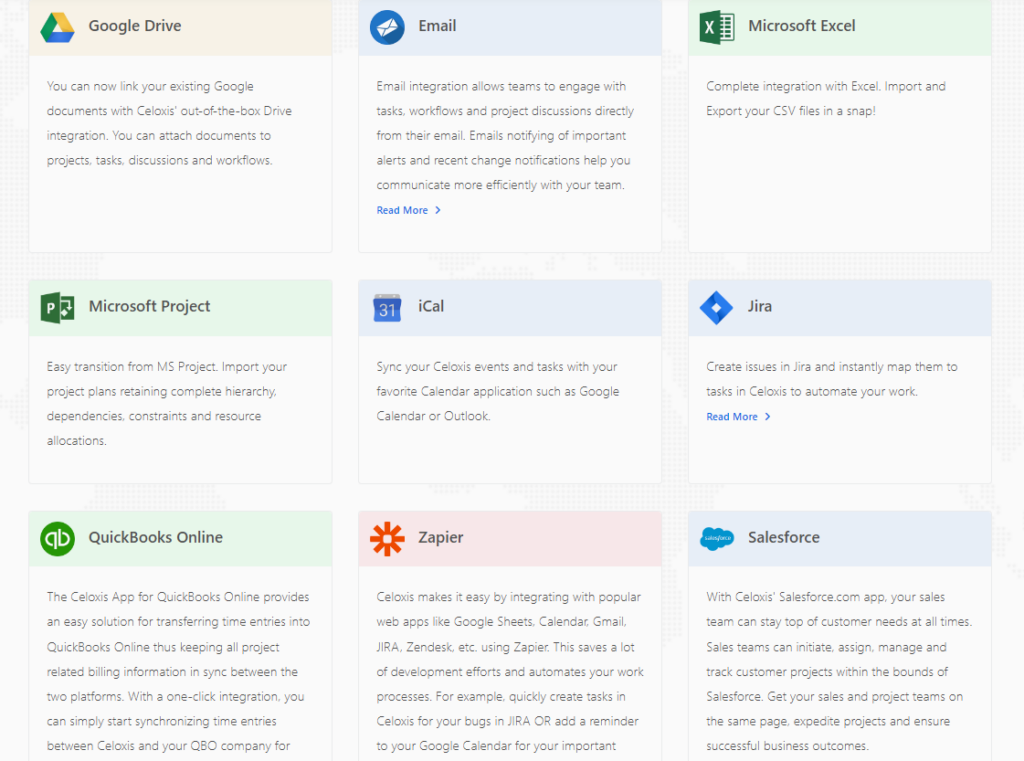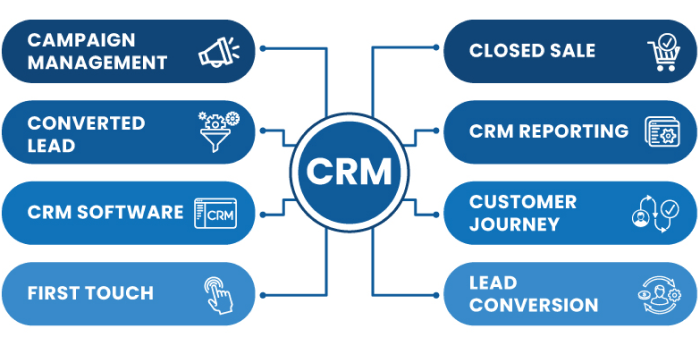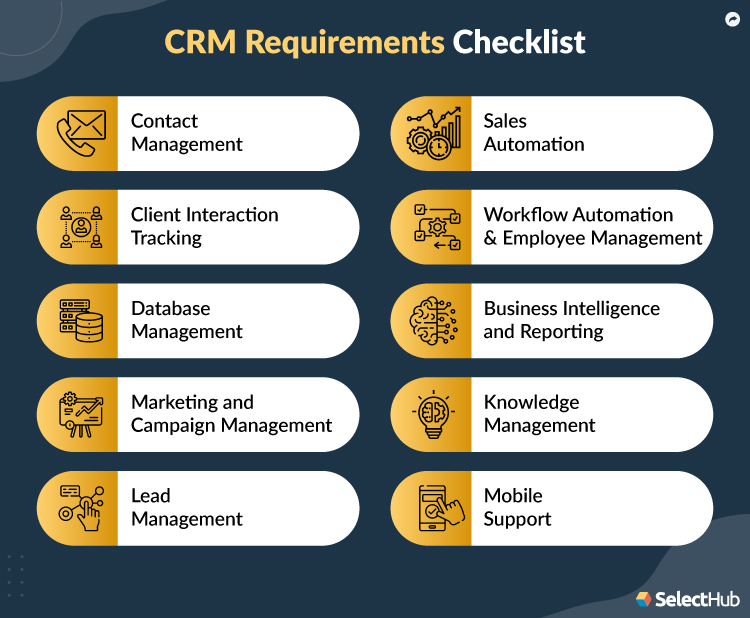The Power of Synergy: CRM Integration and the Flow Revolution
In today’s fast-paced business environment, efficiency is king. Companies are constantly seeking ways to streamline operations, reduce costs, and improve customer relationships. One of the most effective strategies for achieving these goals is through the integration of Customer Relationship Management (CRM) systems with workflow automation tools, often referred to as ‘Flow’ platforms. This article will delve deep into the world of CRM integration with Flow, exploring its benefits, implementation strategies, and real-world examples.
CRM systems are the backbone of customer-centric businesses. They store and manage vast amounts of customer data, providing insights into their behavior, preferences, and interactions. Flow platforms, on the other hand, are designed to automate repetitive tasks and processes, freeing up employees to focus on more strategic initiatives. When these two powerful tools are integrated, the results can be transformative.
Understanding the Fundamentals: CRM and Flow Explained
What is a CRM System?
A CRM system is a software solution that manages a company’s interactions with current and potential customers. It centralizes customer data, enabling businesses to:
- Track customer interactions (emails, calls, meetings)
- Manage sales pipelines and opportunities
- Automate marketing campaigns
- Provide personalized customer service
- Analyze customer data to identify trends and opportunities
Popular CRM platforms include Salesforce, HubSpot, Zoho CRM, Microsoft Dynamics 365, and Pipedrive. The choice of CRM often depends on the size of the business, its industry, and its specific needs.
What is a Flow Platform?
A Flow platform, also known as a workflow automation tool, enables businesses to design and automate complex processes. It allows users to create workflows that trigger actions based on specific events or conditions. Key features of a Flow platform include:
- Visual workflow builders (drag-and-drop interfaces)
- Integration with various applications (CRM, email, social media, etc.)
- Automated task assignments and notifications
- Data transformation and manipulation capabilities
- Reporting and analytics on workflow performance
Examples of Flow platforms include Zapier, Microsoft Power Automate (formerly Microsoft Flow), Integromat (now Make), and UiPath. These platforms offer a wide range of pre-built integrations and customization options.
The Benefits of CRM Integration with Flow
The integration of CRM and Flow provides a multitude of benefits, leading to increased efficiency, improved customer satisfaction, and higher profitability. Here are some of the key advantages:
1. Automation of Repetitive Tasks
One of the primary benefits of CRM integration with Flow is the automation of repetitive tasks. This frees up employees from manual data entry, report generation, and other time-consuming activities. For instance, when a new lead is created in the CRM, a workflow can automatically trigger an email to the sales team, assign the lead to a sales representative, and create a task for follow-up. This automation saves time, reduces errors, and ensures that no leads fall through the cracks.
2. Improved Data Accuracy and Consistency
Data accuracy is crucial for making informed business decisions. CRM integration with Flow helps to ensure that data is consistent and accurate across all systems. For example, when a customer updates their contact information in the CRM, a workflow can automatically update the corresponding information in other connected applications, such as the email marketing platform or the accounting system. This eliminates the need for manual data synchronization and reduces the risk of errors.
3. Enhanced Sales and Marketing Effectiveness
By integrating CRM with Flow, businesses can create more effective sales and marketing campaigns. For example, when a lead reaches a certain stage in the sales pipeline, a workflow can automatically trigger a personalized email sequence, send a targeted SMS message, or assign the lead to a specific sales representative. This allows businesses to nurture leads, increase conversion rates, and improve overall sales performance. Similarly, in marketing, you can automate the process of adding new contacts to specific email lists based on their behavior or demographics within the CRM.
4. Streamlined Customer Service
CRM integration with Flow can significantly improve customer service. Workflows can be used to automate the routing of customer inquiries, the creation of support tickets, and the delivery of automated responses. For example, when a customer submits a support request through the CRM, a workflow can automatically assign the ticket to the appropriate support agent, send an acknowledgment email to the customer, and track the resolution process. This streamlines the customer service process, reduces response times, and improves customer satisfaction.
5. Increased Employee Productivity
By automating manual tasks and streamlining workflows, CRM integration with Flow can significantly increase employee productivity. Employees can focus on higher-value activities, such as building relationships with customers, developing new products, and strategizing for business growth. This leads to increased job satisfaction, improved employee morale, and a more efficient workforce.
6. Better Reporting and Analytics
Flow platforms can collect and analyze data from various sources, including the CRM system. This provides businesses with a comprehensive view of their operations, allowing them to identify trends, measure performance, and make data-driven decisions. For instance, you can create automated reports that track sales pipeline progress, customer support ticket resolution times, and marketing campaign performance.
Implementing CRM Integration with Flow: A Step-by-Step Guide
Implementing CRM integration with Flow requires careful planning and execution. Here’s a step-by-step guide to help you through the process:
1. Define Your Goals and Objectives
Before you begin, it’s essential to define your goals and objectives. What do you hope to achieve by integrating your CRM with Flow? Do you want to automate specific tasks, improve customer service, or streamline sales processes? Clearly defining your goals will help you choose the right tools, design effective workflows, and measure the success of your integration.
2. Choose the Right Tools
Selecting the right CRM and Flow platforms is crucial for successful integration. Consider factors such as:
- Compatibility: Ensure that the CRM and Flow platforms are compatible with each other. Check for pre-built integrations or APIs that allow for seamless data exchange.
- Features: Evaluate the features offered by each platform and choose the ones that best meet your needs.
- Scalability: Consider the scalability of the platforms to ensure that they can accommodate your future growth.
- Cost: Compare the pricing plans of different platforms and choose the one that fits your budget.
Research and compare different CRM and Flow platforms to find the best fit for your organization.
3. Plan Your Workflows
Once you’ve chosen your tools, it’s time to plan your workflows. Identify the processes that you want to automate and the tasks that you want to trigger. Create a detailed diagram of each workflow, outlining the steps involved, the data that will be exchanged, and the actions that will be performed. This diagram will serve as a blueprint for your integration.
4. Build and Test Your Workflows
Using the visual workflow builder in your Flow platform, build your workflows based on the diagrams you created. Test each workflow thoroughly to ensure that it functions correctly. Verify that data is being transferred accurately, that actions are being triggered as expected, and that there are no errors or glitches. It’s crucial to test in a sandbox environment before implementing in a live setting.
5. Deploy and Monitor Your Integration
Once you’ve thoroughly tested your workflows, deploy your integration. Monitor the performance of your workflows closely. Track metrics such as task completion rates, error rates, and data accuracy. Make adjustments as needed to optimize performance and address any issues that arise. Regularly review and update your workflows to ensure they remain effective and aligned with your business needs.
6. Train Your Team
Provide adequate training to your team on how to use the integrated systems and the new workflows. Ensure that they understand the benefits of the integration and how it will impact their daily tasks. Provide ongoing support and resources to help them adapt to the changes.
Real-World Examples of CRM Integration with Flow
Here are some real-world examples of how businesses are leveraging CRM integration with Flow:
1. Lead Qualification and Assignment
When a new lead is captured through a website form or other marketing channel, a workflow can automatically:
- Qualify the lead based on pre-defined criteria (e.g., industry, company size).
- Assign the lead to the appropriate sales representative.
- Send the sales rep a notification with the lead’s information.
- Create a task for the sales rep to follow up with the lead.
This ensures that leads are quickly and efficiently routed to the right sales representative, maximizing the chances of conversion.
2. Automated Email Marketing
Integrating the CRM with an email marketing platform allows for automated:
- Sending of welcome emails to new customers.
- Triggering of personalized email sequences based on customer behavior (e.g., abandoned cart emails).
- Segmentation of email lists based on customer data in the CRM.
- Sending of promotional offers and newsletters to targeted customer segments.
This improves email marketing effectiveness and increases customer engagement.
3. Customer Onboarding Automation
Streamline the customer onboarding process by automating:
- Creating new customer accounts in the CRM.
- Sending welcome emails with relevant information and resources.
- Creating support tickets for onboarding assistance.
- Assigning onboarding tasks to customer success representatives.
This provides a seamless onboarding experience and reduces the time to value for new customers.
4. Invoice and Payment Automation
Automate the invoicing and payment process by:
- Creating invoices in the accounting system based on sales data in the CRM.
- Sending automated payment reminders to customers.
- Updating the CRM with payment status information.
- Generating reports on outstanding invoices and payment trends.
This improves cash flow and reduces manual data entry.
5. Help Desk and Support Ticket Automation
Improve customer support efficiency by automating:
- Routing customer inquiries to the appropriate support agents.
- Creating support tickets in the CRM.
- Sending automated responses to acknowledge customer inquiries.
- Tracking the resolution of support tickets and sending follow-up emails.
This streamlines the support process and improves customer satisfaction.
Choosing the Right Integration Strategy
The best integration strategy will depend on the specific CRM and Flow platforms you are using, as well as your business requirements. Here are some common approaches:
1. Native Integrations
Many CRM and Flow platforms offer native integrations, meaning they have pre-built connectors that allow for seamless data exchange. This is often the easiest and fastest way to integrate the two systems. Check the documentation of your CRM and Flow platforms to see if native integrations are available.
2. API-Based Integrations
If native integrations are not available, you can use APIs (Application Programming Interfaces) to connect the CRM and Flow platforms. APIs allow you to programmatically access and exchange data between different applications. This requires more technical expertise but offers greater flexibility and customization.
3. Third-Party Integration Platforms
There are several third-party integration platforms available, such as Zapier and Make, that specialize in connecting different applications. These platforms provide a user-friendly interface and a wide range of pre-built connectors, making it easier to integrate your CRM and Flow platforms, even if they don’t have native integrations or APIs.
4. Custom Development
In some cases, you may need to develop a custom integration solution. This may be necessary if you have unique requirements or if the available integration options do not meet your needs. Custom development requires the most technical expertise but offers the greatest level of control and customization.
Best Practices for Successful CRM and Flow Integration
To maximize the benefits of CRM and Flow integration, follow these best practices:
1. Start Small and Iterate
Don’t try to integrate everything at once. Start with a small set of workflows and gradually expand the integration as you gain experience and identify new opportunities. This allows you to minimize risk and learn from your mistakes.
2. Prioritize Data Quality
Ensure that the data in your CRM is accurate and up-to-date. Cleanse your data before integrating it with Flow to avoid propagating errors. Implement data validation rules to prevent incorrect data from being entered into the system.
3. Document Your Workflows
Document your workflows thoroughly, including the steps involved, the data that is being exchanged, and the actions that are being triggered. This documentation will be invaluable for troubleshooting issues, training new employees, and making future modifications.
4. Test Thoroughly
Test your workflows thoroughly before deploying them. Verify that data is being transferred accurately, that actions are being triggered as expected, and that there are no errors or glitches. Test in a sandbox environment before implementing in a live setting.
5. Monitor Performance and Make Adjustments
Regularly monitor the performance of your workflows and make adjustments as needed. Track metrics such as task completion rates, error rates, and data accuracy. Identify areas for improvement and optimize your workflows to maximize efficiency and effectiveness.
6. Stay Updated
Keep your CRM and Flow platforms updated with the latest versions and features. Vendors regularly release updates that include bug fixes, security patches, and new functionality. Staying up-to-date ensures that you are taking advantage of the latest improvements and that your integration is secure.
7. Security Considerations
When integrating CRM and Flow, it’s crucial to consider security implications. Protect sensitive customer data by implementing appropriate security measures, such as encryption, access controls, and regular security audits. Ensure that your integration complies with relevant data privacy regulations, such as GDPR and CCPA.
The Future of CRM and Flow Integration
The integration of CRM and Flow is constantly evolving, with new technologies and innovations emerging regularly. Here are some trends to watch for:
1. Artificial Intelligence (AI) and Machine Learning (ML)
AI and ML are increasingly being used to enhance CRM and Flow integrations. AI can be used to automate more complex tasks, such as lead scoring, customer segmentation, and predictive analytics. ML can be used to optimize workflows and personalize customer interactions.
2. Robotic Process Automation (RPA)
RPA is being used to automate repetitive tasks that are not easily automated with traditional workflow tools. RPA bots can interact with applications in the same way that humans do, automating tasks such as data entry, report generation, and system integration.
3. Low-Code/No-Code Platforms
Low-code/no-code platforms are making it easier for businesses to build and customize their own integrations. These platforms provide a user-friendly interface and a wide range of pre-built components, allowing users to create complex workflows without writing code.
4. Integration Platform as a Service (iPaaS)
iPaaS solutions are becoming increasingly popular for managing and integrating cloud-based applications. iPaaS platforms provide a centralized hub for connecting different applications, automating workflows, and managing data synchronization. This simplifies the integration process and reduces the need for manual intervention.
Conclusion: Embracing the Power of Integration
CRM integration with Flow is a powerful strategy for improving business efficiency, enhancing customer relationships, and driving revenue growth. By automating repetitive tasks, improving data accuracy, streamlining processes, and leveraging the latest technologies, businesses can unlock the full potential of their CRM systems and create a more customer-centric and efficient operation. By following the best practices outlined in this article, businesses can successfully implement CRM integration with Flow and achieve their business goals. The future of business is undoubtedly intertwined with the seamless integration of these powerful tools, and those who embrace this synergy will be well-positioned for success in the competitive landscape.


